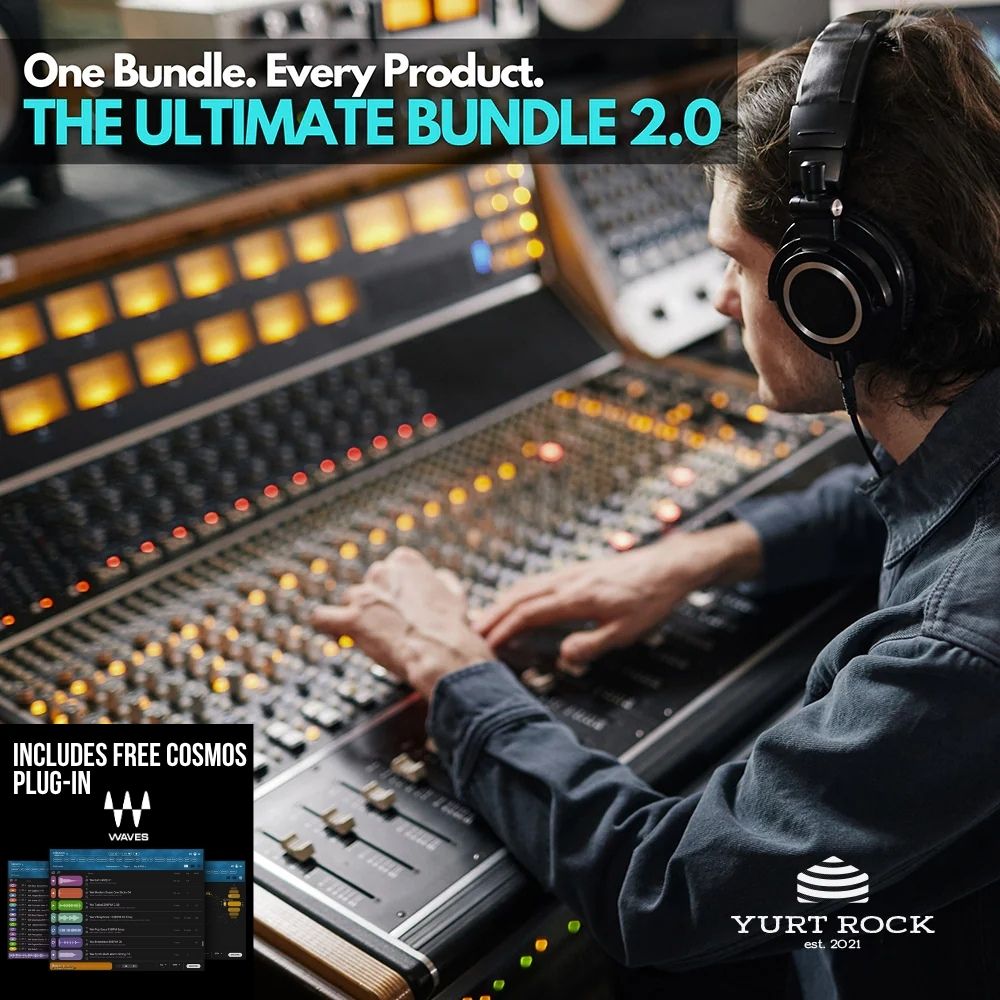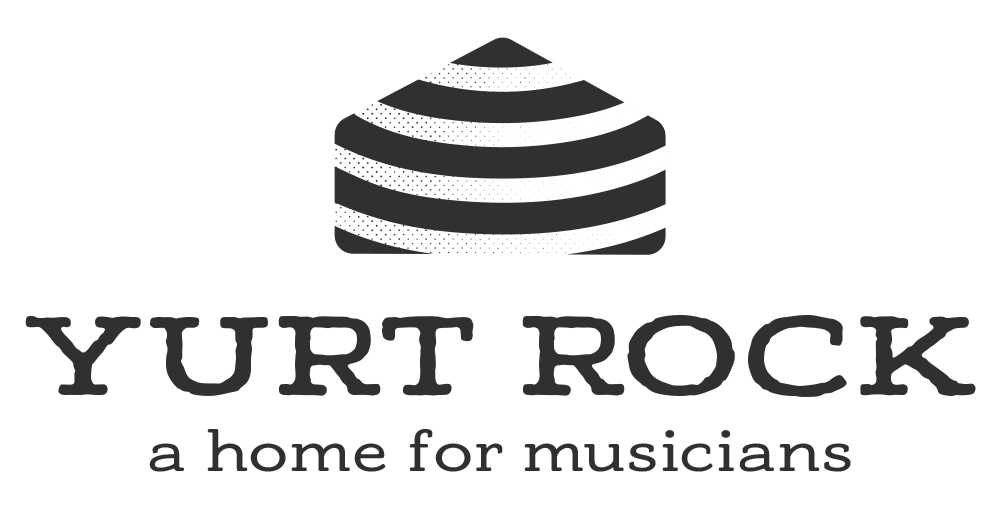We are excited to share the first Yurt Rock Artist Interview featuring drummer, George Fludas, from the fan favorite Bonhamology drum loop and multitrack session inspired by the sounds of John Bonham.
We discuss the history, style and sound of Bonham, Electrical Audio Studio where Bonhamology was recorded, and the recording session using a 70s era Ludwig kit with over 16 mics.
Fludas is a talented and diverse drummer who was kind enough to sit down with us. He plays actively in the Chicago music scene, tours with a number of credible jazz artists, and runs a successful YouTube channel called Bonhamology which was recently featured in Rolling Stone. You can find links to George’s website, YouTube Channel and more at the end of the interview.
Without further ado, here’s our conversation with the drummer behind Bonhamology, George Fludas.
YR: Can you tell us a bit about your music career and what you’ve been up to recently?
YR: How were you introduced to Yurt Rock?
I got connected with Yurt Rock through George Sluppick who also recorded a drum pack with Yurt Rock.
YR: Did you grow up listening to Bonham and what were your other drum influences?
George: My father was a big jazz fan and he played drums. He played as a hobby though. He wasn't a professional musician, but he was good. So when I was younger he'd play records and say, “listen to the snare drum and how he slaps the brushes”, things like that. So they were basically lessons and I would try to emulate what I heard.
As a jazz musician, you've got to keep your mind open to what's happening currently, around the world, different influences, but also music rooted in the past. Rooted in the tradition. So I grew up admiring all of the great legendary jazz drummers like Art Blakey, Max Roach, and Elvin Jones.
As far as Bonham specifically, when I was younger and really into playing rock and roll, Bonham was always my favorite. I loved Stewart Copeland. I loved Neil Peart. But Bonham, to me, was like everything was there. He had a great sound. He had a great touch. He had a great feel. He had a great sense of musicality. He would set things up almost like a big band drummer, which I can relate a lot to being into jazz.
YR: You recorded Bonhamology Vol 1 & 2 at the famous Electrical Audio Studio in Chicago. Many musicians know this as a pretty legendary studio owned by Steve Albini. Can you tell us why you chose to record here and describe the characteristics of the room?
George: When I was first approached about doing Bonhamology for Yurt Rock, I was just going to do it in my basement where I do all of my at‑home recording. It really isn’t a studio per se. It's a family room, but I've been able to get some good mixes together.
After thinking about it, I was like, if I'm doing this thing, I want it to be really right. It's worth the investment to do it somewhere where I'm going to get the most out of the sound of one of my kits.
Electrical Audio has this room, it's kind of a legendary room called studio B, and the drums sound great in there. It's this big, tall rectangle, and it just goes up. It’s very industrial. There's just something about it. The drums really sound beautiful in that room and they blend really well.
YR: How were the drums recorded? What was the mic configuration?
George: They used 16 microphones total, with 4 room mics. There were two room mics on the floor and two that were kind of out and in front of the kit. I just remember thinking, wow, this is kind of ironic. Bonham’s known for his minimalistic miking and there's 16 mics on this kit.
That's what's so great about the multitrack version of Bonhamology though. You can use it however, it's like Legos. You can build what you want with it. If you want to use eight tracks, just use eight. If you want to use two room mics and a kick and snare, you can do that.
YR: Yeah, you really do have complete control of the mix. Can you tell us a bit about Bonham’s Ludwig Maple Thermogloss kit that inspired the drums for Bonhamology Vol 1 & 2?
George: Well, if you're familiar with Bonzo’s kits, the first iconic kit he had was the Ludwig Maple Thermogloss. If you've ever seen the concert footage from Royal Albert Hall in 1970, he's playing that kit. Carmine Appice (Vanilla Fudge) was actually the one who connected Bonham with Ludwig when they were on their first tour together.
Ludwig ordered the Thermogloss kit for Bonzo with two bass drums and they were 26x15. The bass drum was a little deeper than his other kits. Every kit after that was 26x14. The toms were 14x12, 16x16, and 16x18. There's rumors he had a 20” for some time and there was a 13x9, which he never used.
The kit was eventually sold for $5 to Colin Fairley.
YR: Wow, $5?
George: Yeah, he apparently regretted selling it, but Fairley played it for a while and then he sold it to Paul Thompson from Roxy Music. Paul Thompson has it to this day.
There's an interesting article a friend of mine wrote on the kit for Modern Drummer. He went to England and met Paul Thompson. This was the first time anyone was basically allowed to see the Thermogloss kit and do an assessment on it. That's when it came out that those bass drums were 26x15.
YR: That’s a great story. Tell us more about the Thermogloss kit you used to record Bonhamology.
George: My Thermogloss kit is from 1971 and has the standard 26x14 bass drum and 10x14 tom. So the kit I used for Bonhamology is basically the same size and era of Bonham’s Green Sparkle kit which he got in 1970. They're really close in age. The shells are three ply - maple, poplar, maple - with reinforcement rings. So for all intents and purposes, my Thermogloss kit is the same era and same size kit that Bonham used for Zeppelin IV.
YR: Awesome, what an iconic album Zeppelin IV was. So the Thermogloss kit you used for Bonhamology 1 & 2 is sort of a blend between Bonham’s iconic Thermogloss finish and the drum sizes of his Green Sparkle kit from the same era.
George: Yep, that's right.
YR: Snare wise, you used a Supraphonic, right?
George: Yeah, I brought two snares: the standard Ludwig Supraphonic, which is a ‘69 Supraphonic, same era and type as Bonham and a Ludwig Chrome over Brass Supraphonic, which I used for one-shots only.
YR: What was the creative process like deciding how you were going to record Bonhamology Vol 1 & 2?
George: When I first talked to Yurt Rock about it, I was like, do you want me to play things in a Bonham-esque way, but not necessarily exactly Zeppelin tunes? Or do you think I should do actual grooves from the records? Like the “Black Dog” groove or the “Kashmir” groove.
So I thought about it, and it didn’t really make sense to play the same beats that are on the records. I mean, even though I think Bonham fans would think it's cool, in terms of creativity and integrity, I just thought it’s not right to play the same beats.
YR: I'm sure many musicians can relate to you wanting to put an original touch on the recordings. They turned out fantastic.
What was your process like actually recording the grooves? Was there much preparation involved?
George: I did preplan all the tracks that I was going to be using as an inspiration. So I had songs in mind like “Whole Lotta Love”, but I wanted to change it a little bit and play variations on the theme or the beat. In other words, the “Lemon Song”, which is just basically a funk, 4/4 blues kind of groove would be the bass line I’d have in mind for one of the grooves.
Yurt Rock had given me instructions to record about four minutes for each song. So I just set my phone timer and then I'd say set the click to 80 BPM and I would just play along with the click. That was the one part of it that I was like, I know I have to do this for it to be usable on a grid or to be usable in this capacity.
So that was kind of the idea. It was all just visualizing, I wasn't playing along to Zeppelin tracks or anything. It was all improv basically.
YR: It’s been awesome hearing how people use these Bonham-inspired grooves in their own productions and songwriting. Have you received feedback personally on Bonhamology and how musicians are using it in their workflow?
George: Yeah, actually. This one guy, he's a guitar player, recorded this piece and sent it to me and I was like, wow, this is actually really nice sounding… He used one-shots and bits of my groove to construct his own beat and was looping it. I was like, man, this sounds like Bonham on an outtake track.
YR: That’s got to be a great feeling, hearing from other musicians inspired by your playing. I’m curious, can Bonham’s playing be heard on other recordings outside of Led Zeppelin?
George: There's recordings of him with Roy Wood and there's a recording of him with Paul McCartney playing “Beware My Love” from Wings. He plays great on it. I'm not that big a fan of the song, it's a very repetitive song, but with Bonham’s groove, it's so cool and different sounding. I would love to have heard him play with more artists outside of Zeppelin, like with John Lennon, George Harrsion.. Guys who wrote good songs. I know Bonzo would've loved playing.
YR: You’ve given us some awesome insight into Bonham and the story behind the Bonhamology sessions. What are some resources you suggest for learning more about Bonham and Led Zeppelin?
George: Books. Thunder of Drums is a good book. There's a new one called Beast and the book by his younger brother, Mick, is great. It’s called Bonham by Bonham. That's a really good one because his brother was a photographer and he has a lot of family anecdotes. It's more personalized and not real technical like Thunder of Drums.
Helpful Links
Bonhamology Loops & Multitracks
Interview by Jake Ostmann


